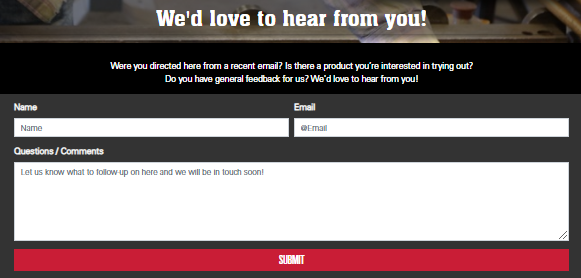15 Oct 10/15/2020
Overview of Bloodborne Pathogens and PPE
Blood is essential to every cell in our body; without it, we die. It's the vital ingredient that transports nutrients and oxygen to our cells and takes carbon dioxide waste back to the lungs for expulsion. However, blood carries infectious organisms, too, which can pose a risk to others. Bloodborne pathogens (BBPs) are disease-causing organisms carried in human blood and other bodily fluids.
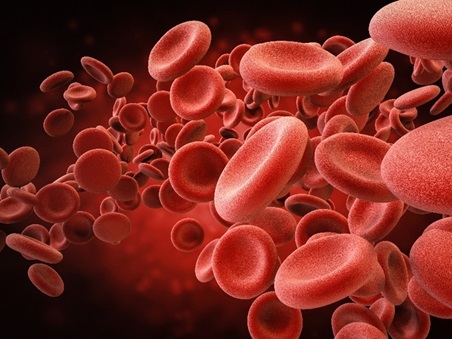
"For the life of the flesh is in the blood," Leviticus 17.
Pathogens can infect workers with occupational exposure or job-related contact primarily with human blood through various exposure risks. An unexpected stick of a needle or other sharp tool or routine exposure to messy situations involving bodily fluids is the most common form of exposure to BBPs.
Wearing proper personal protective equipment (PPE) is essential for workers to protect themselves from these microorganisms. PPE includes clothing and equipment worn by a person to minimize the risk of harm while performing their duties. It can protect from exposure to bloodborne pathogens and help reduce exposure to potentially harmful substances when workers clean up bodily fluids such as vomit, urine, or feces.
Adequate PPE almost always starts with gloves and often includes eye protection like goggles, face shields, disposable masks, and gowns that protect workers' hands, skin, eyes, nose, and mouth. This article will take an in-depth look at bloodborne pathogens and the PPE that MCR Safety offers to help workers stay protected.
Overview of Standard: OSHA BBP 29 CFR 1910.1030
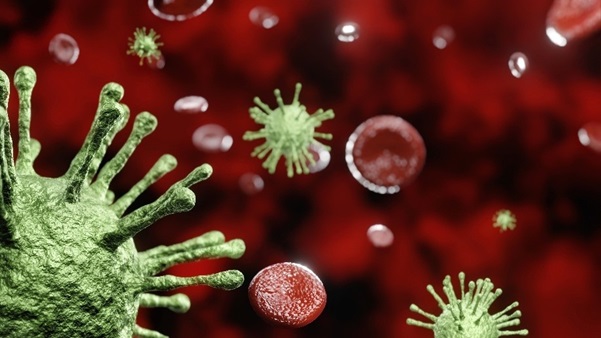
To reduce the possibility of exposure to bloodborne pathogens (BBPs), employers must implement safety provisions as required by the Occupational Safety and Health Administration (OSHA) Bloodborne Pathogens Standard (29 CFR 1910.1030).
According to the standard, protection from all human blood, body fluids, and infectious materials must be considered. Here is a comprehensive list of biohazardous waste that may include dangerous pathogens and other potentially infectious materials (OPIMs) that pose a substantial risk to workers:
- Animal waste
- Dialysis waste
- Human bodily fluids: saliva, vomit, urine, feces, or other secretions
- Sharp waste: needles and blades
- Pathological and microbiological waste: all human tissue
- Human bites, cuts, and abrasions
The most common contagious microorganisms that workers encounter and are exposed to include hepatitis B (HBV), hepatitis C (HCV), and human immunodeficiency virus (HIV). However, other BBPs can infect workers when they are exposed by accident. Below is an additional list of bloodborne pathogens:
- Arthropod-borne viruses like Zika
- Bacteria like syphilis (Treponema pallidum)
- Ebola virus disease (EVD)
- Epstein-Barr virus (infectious mononucleosis)
- HTLV-1 virus (human T-lymphotropic)
- Parasites like malaria (Plasmodium falciparum)
To eliminate occupational exposure to these dangers, OSHA provides various support to businesses and organizations, which we highlight in our next section.
OSHA Guidance and Hazards
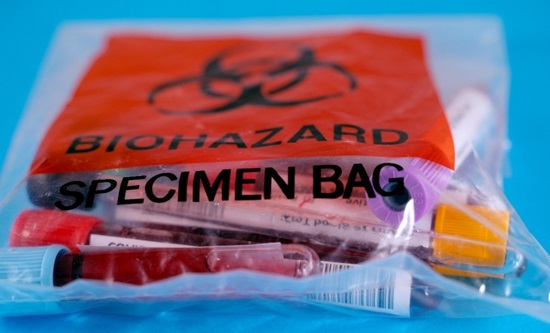
As OSHA highlights in their 3186 publication, a written exposure control plan (ECP) must be established by any organization where workers are exposed to BBP hazards. The ECP plan will address the following:
- Determining those who are at the highest risk for occupational exposure.
- Engineering controls and work practice controls established to prevent or minimize contact with BBPs. This may include installing sharps containers and using labels and red bags marked with a biohazard symbol.
- Setting appropriate quality standards for PPE: gloves, eye protection, etc.
- Vaccinating workers from hepatitis B.
- Regular communication of hazards.
- Accurate and timely record keeping of exposures.
OSHA also gives guidance on recognizing hazardsand what to do immediately after coming in contact with BBPs or an OPIM in the eyes, nose, mouth, or through broken skin.
They also provide a free, on-site safety and health consultation service. The On-site Consultation Program is not a part of OSHA's enforcement side, which means you don't have to worry about citations and penalties if you sign up to participate in it. If you and your company need help to address BBP hazards, reach out to their highly qualified occupational safety and health professionals for a consultation.
Training and Certification
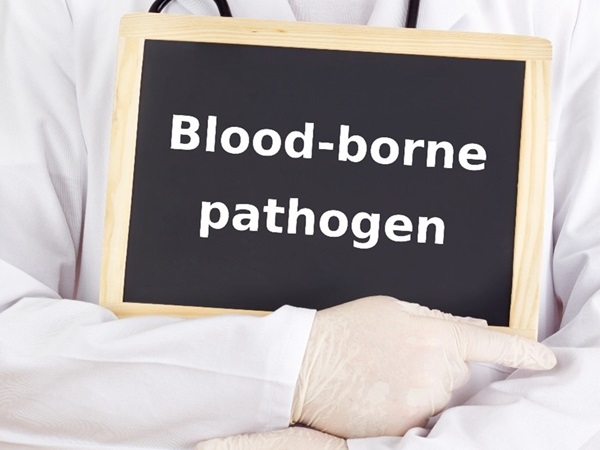
OSHA's 29 CFR 1910.1030 standard requires that any employee with a risk of exposure to infection from blood or other potentially pathogenic materials in the workplace must undergo BBP training to guarantee a healthy work environment and overall safety. At a minimum, the training covers the following:
- Explanation of OSHA's 29 CFR 1910.1030
- Review of the organization's ECP
- Recognizing tasks that involve hazards
- Personal protective equipment (PPE)
- Benefits of being vaccinated
- Actions to take during an emergency
- Explanation of signs and labels
For first-aid providers and healthcare professionals who work in blood banks, hospitals, nursing homes, and other medical settings, BBP training is required at least once a year or when there is a change in responsibility that exposes them to blood or OPIMs. Those working in HIV/HBV laboratories and production facilities must be capable of demonstrating they understand appropriate techniques and practices when working around BPP. Employers are responsible for assuring that employees are proficient in handling infectious agents.
The American Academy of CPR and First Aid offers free online BBP training, which covers the handling of blood and OPIMs. After passing a 20-question multiple-choice exam, an employee can obtain certification in bloodborne pathogens for a small fee, valid for one year from the date of issue.
Occupations Impacted
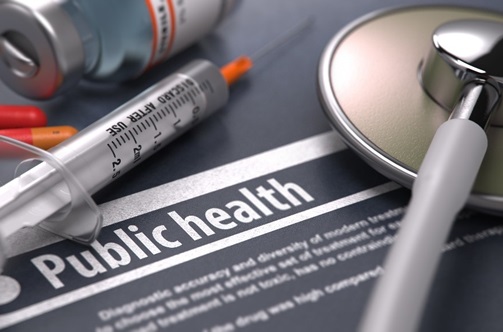
BBPs impact any employee who may come in contact with human blood or OPIM. This includes more than 5.6 million workers in the United States across multiple industries and a wide range of occupations. Workers in the following fields are those with the highest risk of coming into contact with pathogens:
- Hospital and healthcare workers: doctors, nurses, cleaning and janitorial staff, orderlies, personal care aides, and support occupations
- Professional laundry workers at commercial, hotel, and hospitality, and hospital laundries
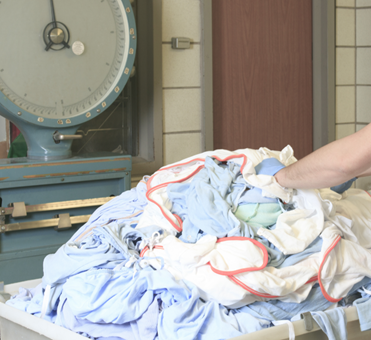
Laundry Services
- Anyone who administers first aid
- Housekeeping personnel who clean blood and bodily fluids
- Specimen handling: infectious waste handling and those responsible for collecting, transporting, and testing blood or other bodily fluids
- Medical diagnostic laboratories, clinical laboratory technicians, and technologists
- Medical workers at blood testing labs, plasma centers, and tissue banks
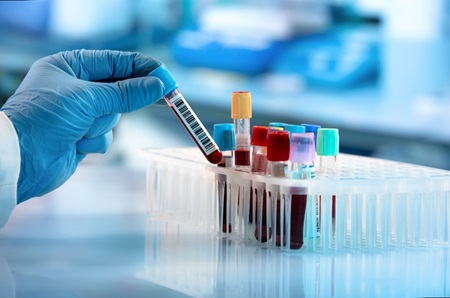
Blood Test Lab
- Dental office workers: dentists, hygienists, assistants, and laboratory technicians
- Home healthcare workers and nursing home employees: aids, assistants, companions, nurses, and technicians
- Funeral homes and mortuaries: morticians and undertakers
- Research labs, especially those focused on HIV and HBV
- Medical equipment maintenance, repair, and service workers
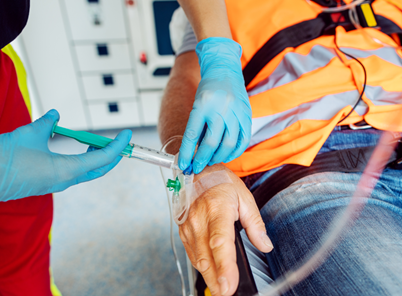
Emergency Medical Services
- First responders and emergency medical service (EMS) providers
- Public safety personnel: firefighters, law enforcement personnel, and correctional officers
- Tattoo artists and those who pierce the skin
MCR Safety PPE

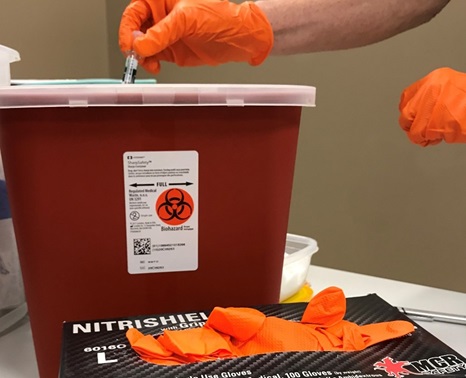
According to OSHA, wearing the right kind of personal protective equipment (PPE) can considerably reduce the risk of exposure to bloodborne pathogens.
In compliance with the OSHA standard, employers must provide, clean, repair, and replace PPE as needed and at no cost to workers. The BBP standard requires employers to protect workers who may come into direct contact with blood and OPIMs while performing their job duties. Since PPE acts as a barrier against exposure, workers should protect their hands, face, eyes, and bodies by wearing protective gloves, gowns, masks, and eye protection.
Here's an overview of MCR Safety's PPE that workers utilize for protection against BBPs:
- Disposable Gloves – Single-use disposable gloves protect hands from contact with infectious materials by creating a waterproof shield over the skin. They are super thin and essentially skintight, so they provide the most dexterity and tactile sensitivity of hand protection forms. MCR Safety currently offers over 48 different disposable glove options.
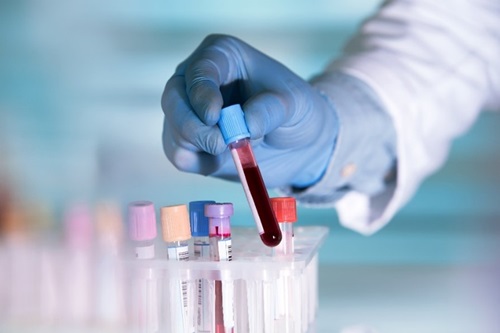
Disposable gloves shield the skin from hazards.
- Face Shields – Under ANSI Standard Z87.1-2015, face shields used in conjunction with safety glasses or goggles provide superior protection against various hazards, including splashes from biological agents. Face protection should be worn whenever splashes, spray, spatter, droplets or aerosols of blood are present. Together with safety eyewear, a face shield can provide comprehensive protection for your entire face. MCR Safety offers various disposable face masks, which you will often find supplied in first aid kits.
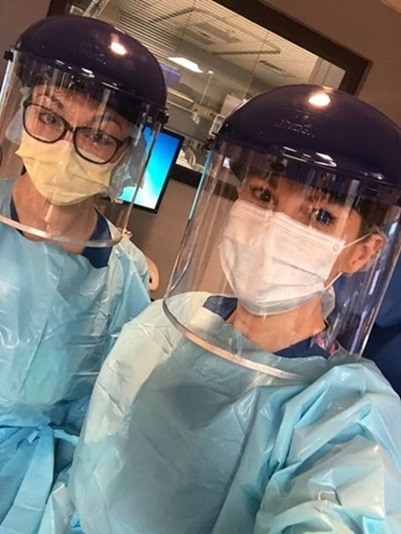
Nurses are wearing MCR Safety face shields.
- Needle-Resistant Gloves – MCR Safety's ML300A Gloves feature Alycore™, one of the most cut- and puncture-resistant materials available. These gloves passed the ASTM F2878-10 Needle Stick Level 5 for needle stick protection in the palm and fingers. Our Alycore™ gloves also offer maximum dexterity and sense of touch due to the high degree of flexibility and patent-pending construction.
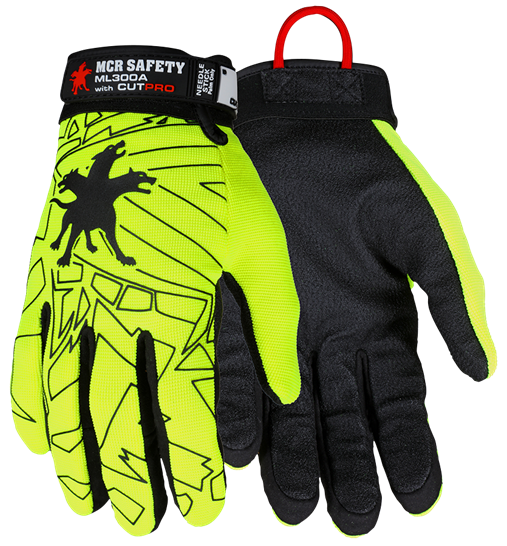
- Safety Goggles – All of MCR Safety's goggles are ANSI Z87.1-certified, which means they've passed a high impact standard. The tight-fitting strap design completely seals off eyes from outside dangers like liquid splashes. Since safety goggles also extend further from the face, users can often wear their prescription eyeglasses underneath for vision correction.
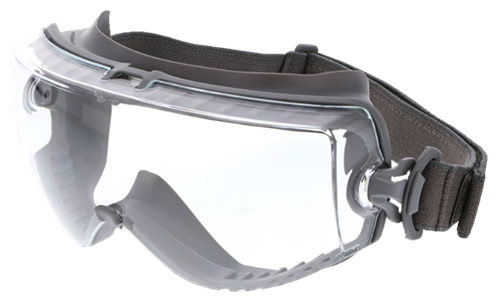
Our article on goggles highlights all of our top-selling styles.
- Protective Clothing – Lab coats, aprons, and shoe covers are various types of garments used as precautionary equipment to protect workers from blood and infectious materials. The type and characteristics of the garment worn will hinge on the task and anticipated degree of exposure.
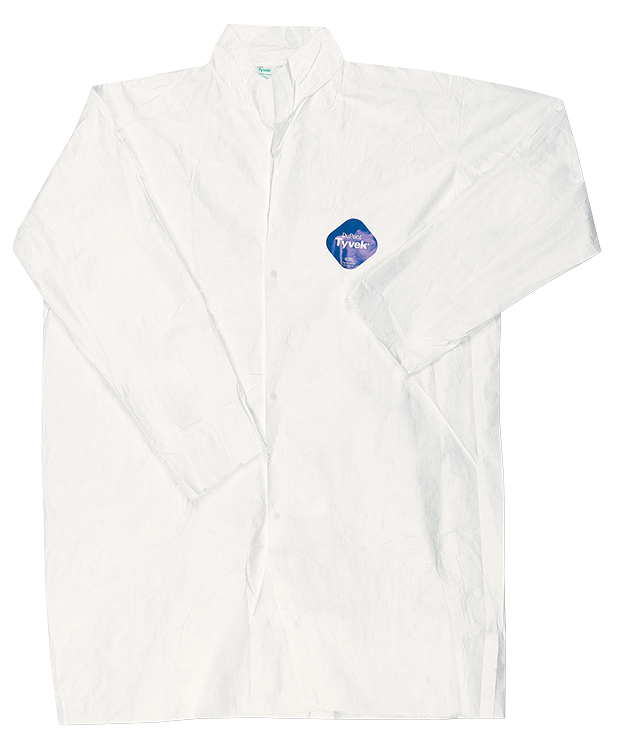
Lab Coat
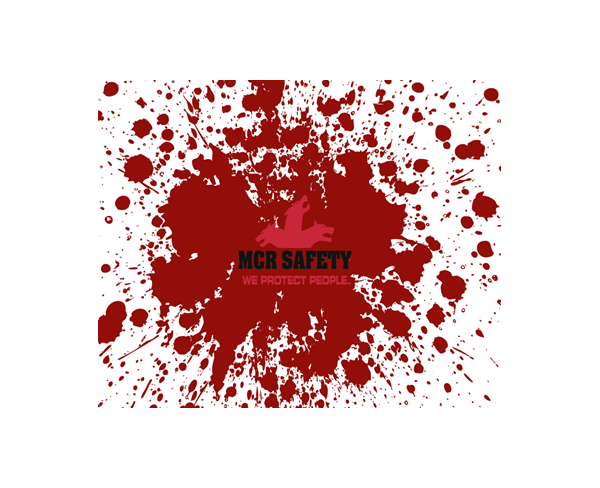
Common Questions

How long do bloodborne pathogens live?
- Bloodborne pathogens can live outside the body for extended periods and still pose a hazard. Here are some examples:
- HIV can survive outside the body for up to six days at room temperature and still cause infection.
- Hepatitis B virus can exist in dried blood for up to a week.
- Hepatitis C virus can live outside the body for up to four days.
Where are bloodborne pathogens found?
- Bloodborne pathogens are infectious microorganisms that are found in human blood, and they transmit disease through direct blood contact. By contrast, vector-borne diseases share disease by a vector or any agent that can transmit an infectious pathogen into another being. The West Nile virus and malaria are transmitted by an insect bite, causing the infected saliva to enter the victim's bloodstream.
Is hepatitis a bloodborne pathogen?
- Hepatitis B (HBV) and hepatitis C (HCV) are considered bloodborne pathogens.
What is the bloodborne pathogens definition?
- According to OSHA, pathogens are microorganisms present in human blood that can potentially cause disease.
Additional Safety Resources: Fact Sheets and Quiz

There is a lot of material around the subject of bloodborne pathogens. Here are some resources to consult if you'd like to learn more:
- Bloodborne Certification PowerPointOSHA PPE Fact Sheet
- Minnesota Safety Council PPE Sheet
- OSHA Hospital Etool
- CDC NIOSH
- CDC Sharp Safety
- CDC Protecting Healthcare Workers
- Employee Training Quiz
MCR Safety - Protecting Workers From Hazards
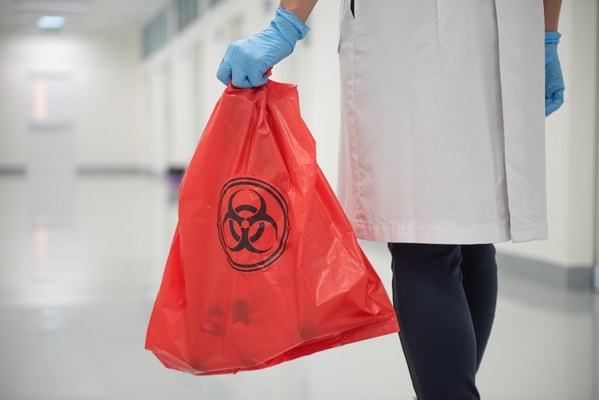
Protecting workers from exposure to bloodborne pathogens is a serious business, one that requires the best, most appropriate, and effective PPE on the market today. We hope the above provides you with all the knowledge needed around this vital subject matter and that the PPE we offer fits your workplace's needs. If you require additional assistance, we encourage you to contact us.
We welcome any comments, feedback, or suggestions for how we can best protect people at work.
For over 45 years, MCR Safety has proven to be a world leader in gloves, glasses, and garments. Whether it’s on the shop floor, an oil rig, or a construction site, we are there providing solutions to workplace hazards. It’s all part of our commitment to protect people.
No matter your industry, we have the personal protective equipment you need.
Learn more about MCR Safety by checking out our most recent video. For more information, browse our website, request a catalog, find a distributor, or give us a call at 800-955-6887.
About the Author
Latest Articles





